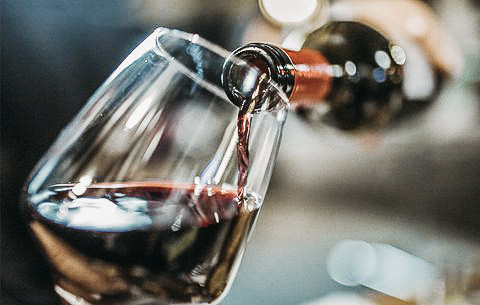
Guest post written by Haley Oropeza
http://www.itshaleyoropeza.com
We’ve all been there when we first start out in wine. You’re in a tasting, and the more the host talks about the wine, the more it starts to sound like a foreign language to you. I’m here to help!
Here is a list of common appearance terms, aroma terms, and taste terms to make you sound like a pro at your next tasting.
Wine Appearance Terms
Brilliant: High clarity
Clear: Transparent, without cloudiness
Cloudy: Indicative of something wrong with the wine
Legs: The droplets that form along the edge of your glass when you swirl your wine
Purplish: A young color, deep in red wine, indicating it will take time to mature
Maderized: A wine past its prime with a brownish tinge due to oxidation or age
Ruby: A rather dark red, often indicative of the youthfulness of a wine
Wine Aroma Terms
Crisp: A pleasant acidity in a still or sparkling wine with a lightness that’s brisk and refreshing
Earthy: This term can be good or bad. Negatively, it can be used to describe muddled flavors and aromas that are a little funky. In positive terms, it can describe the pleasant, clean smell of freshly turned wet earth
Jammy: The smell and taste of red or black fruits like berries, plum, or cherries. Jammy tends to be a negative description of wine as it suggests that the grapes were harvested overripe, causing them to lack tension or freshness
Mineral: This tends to refer to notions that cannot easily be described in terms of fruit or spice. The mineral can come across as a smoky, struck-match note, or even the smell of rain on earth or stone
Oaky: In white wines, oak often comes across as plain vanilla, toffee, or popcorn. In reds, it can be a warming note of cinnamon or nutmeg
Spicy: It’s a wide, but positive term that can refer to baking spice notes of clove, nutmeg or cinnamon imparted by oak aging
Zesty: The intensity and mouthwatering freshness that’s driven by high acidity. Most commonly from fruits such as lemon, orange, grapefruit, or tangerine
Wine Taste Terms
Acidic: Tart, freshness of natural fruit. A high acidity helps to age a wine, and make it a suitable dinner wine
Dry: Without sweetness
Flat: Lacking acidity
Flinty: Dry, clean, sharp taste usually from soils in which the vines grow
Smooth: Without any harshness
Tart: Too high in total acidity
Thin: Water in body
Woody: Stored overly long in wood, usually oak

